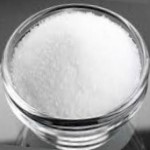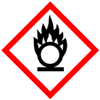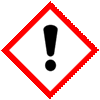CAS Number 7758-05-6, Potassium Iodate BP Ph Eur Analytical Reagent FCC Food Grade Manufacturers Exporters







CAS Number 7758-05-6, Potassium Iodate Manufacturer Exporter
For Properties Specifications of Potassium Iodate Click Properties, Specifications of Potassium Iodate Manufacturer.
For Uses of Potassium Iodate Click Uses of Potassium Iodate Manufacturer.
For For SDS MSDS Sheet of Potassium Iodate Click SDS Safety Data Sheet MSDS Sheet of Potassium Iodate Manufacturer.
The Properties and Specifications of Potassium Iodate:
Potassium Iodate BP Ph Eur Grade Specifications
KIO3 -- 214.0 -- CAS 7758-05-6
DEFINITION
Potassium Iodate contains not less than 99.0% and not more than 101.0% of KIO3, calculated with reference to the dried substance.
CHARACTERISTICS
A white crystalline powder.
Slowly soluble in water; insoluble in ethanol (96%).
Dissolve 10 g of the substance being examined in sufficient water to produce 200 ml (solution S1).
Add 25 ml of hydrochloric acid to 6 g of the substance being examined, evaporate to dryness and repeat. Heat until iodine is removed. Dissolve the residue in 2.5 ml of a 25% v/v solution of hydrochloric acid and dilute to 50 ml with water (solution S2).
IDENTIFICATION
A. 1 ml of solution S1 yields reaction B characteristic of potassium salts.
B. Dissolve 0.1 g in 5 ml of water. Add 1 ml of silver nitrate solution followed by 1 ml of sulphur dioxide solution. A yellow precipitate is produced immediately.
TESTS
Acidity or alkalinity: pH of solution S1, 5.0 to 8.0.
Clarity and colour of solution: Solution S1 is clear and colourless.
Chloride, chlorate, bromide, bromate: Dilute 5 ml of solution S1 to 15 ml with water, add 20 ml of sulphur dioxide solution and heat on a water bath for 30 minutes. Heat to boiling, cool, add 10 ml of 18M ammonia and 20 ml of silver nitrate solution R2 and dilute to 70 ml with water. Filter, transfer 35 ml of the filtrate to a Nessler cylinder and acidify with 6 ml of nitric acid . After 5 minutes, any opalescence, when viewed vertically, is not greater than that produced by treating 5 ml of a 0.00165% w/v solution of sodium chloride at the same time and in the same manner (0.02%).
Iodide: Add 1 ml of 1.8M sulphuric acid to 25 ml of solution S1 and shake with 1 ml of chloroform. Any violet colour produced is not more intense than that of a solution prepared at the same time and in the same manner but using 5 ml of solution S1 and 2 ml of iodide standard solution (10 ppm I) (20 ppm).
Sulphate: Add 1 ml of a 25% w/v solution of barium chloride to 1.5 ml of sulphate standard solution (10 ppm SO4), shake and allow to stand for 1 minute. Add 12.5 ml of solution S2 diluted to 15 ml with distilled water and 0.5 ml of 5M acetic acid and allow to stand for 5 minutes. Any opalescence produced is not more intense than that of a standard prepared in the same manner but using 7.5 ml of sulphate standard solution (10 ppm SO4) diluted to 15 ml with distilled water in place of the solution being examined (50 ppm).
Heavy metals: Adjust the pH of 20 ml of solution S2 to about 5 with 5M ammonia. The solution complies with limit test A for heavy metals, Appendix VII. Use 10 ml of lead standard solution (2 ppm Pb) to prepare the standard (20 ppm).
Loss on drying: When dried at 130C for 1 hour, loses not more than 0.5% of its weight. Use 1 g.
Potassium Iodate FCC Food Grade Specifications
KIO3 -- Formula weight 214.00
CAS 7758-05-6
DESCRIPTION
Potassium Iodate occurs as a white, crystalline powder. One gram dissolves in about 15 mL of water. It is insoluble in alcohol. The pH of a 1:20 aqueous solution is between 5 and 8.
REQUIREMENTS
Identification: Add 1 drop of starch TS and a few drops of 20% hypophosphorous acid to 1 mL of a 1:10 aqueous solution. A transient blue color appears.
Assay: Not less than 99.0% and not more than 101.0% of KIO3 after drying.
Chlorate: Passes test (limit about 0.01%).
Iodide: Passes test (limit about 0.002%).
Lead: Not more than 4 mg/kg.
Loss on Drying: Not more than 0.5%.
Potassium Iodate Analytical Reagent Grade Specifications
KIO3 -- Formula Wt 214.00 -- CAS Number 7758-05-6
REQUIREMENTS
Assay: 99.4-100.4% KIO3
pH of a 5% solution: 5.0-8.0 at 25C
MAXIMUM ALLOWABLE
Insoluble matter: 0.005%
Chloride and bromide (as Cl): 0.01%
Iodide (I): 0.001%
Nitrogen compounds (as N): 0.005%
Sulfate (SO4): 0.005%
Heavy metals (as Pb): 5 ppm
Iron (Fe): 0.001%
Sodium (Na): 0.005%.
The Uses of Potassium Iodate:
Potassium Iodate tablets are used at the time of a nuclear emergency; the tablets stop the thyroid gland (situated in your neck) taking up radioactive iodine, which may be released into the environment following a nuclear accident. Potassium iodate is a medication and dietary supplement. It is used in the analysis of testing arsenic and zinc, in medicine manufacturing, in food as a maturing agent and dough conditioner, as a reagent and as feed additives. Potassium iodide has been widely used in asthma and chronic bronchitis as an expectorant. Potassium iodate is used for iodination of table salt.
The MSDS-SDS Hazard Statement of Potassium Iodate:
Potassium Iodate SDS, Safety Data Sheet
MSDS Sheet, Material Safety Data Sheet 17-Jan-23
1. Product Identification
Product Name & Other Names: Potassium iodate, Iodic acid potassium salt.
CAS No.: 7758-05-6
EINECS: EC Number: 231-831-9
Molecular Weight: 214
Chemical Formula: KIO3
Relevant uses and uses advised against (if any): Industrial Manufacturing.
2. Hazards Identification
GHS, Globally Harmonized System Classification in accordance with 29 CFR 1910
Classification according to Regulation (EC) No 1272/2008
Oxidizing Solids Category 3, H272
Skin corrosion/irritation Category 2, H315
Serious eye damage/eye irritation Category 2A, H319
Specific target organ toxicity, single exposure; Respiratory tract irritation Category 3, H335
Labeling according to GHS & Regulation (EC) No 1272/2008
GHS Label Elements  Oxidizing Solid |
GHS Label Elements |
Signal Word: Danger
Hazard Statements:
H272 - May intensify fire; oxidizer.
H315 - Causes skin irritation.
H319 - Causes serious eye irritation.
H335 - May cause respiratory irritation.
Precautionary Statements - Prevention
P210: Keep away from heat/sparks/open flames/hot surfaces. - No smoking.
P220: Keep/Store away from clothing/combustible materials
P221: Take any precaution to avoid mixing with combustibles
P264: Wash face, hands and any exposed skin thoroughly after handling
P280: Wear protective gloves/ protective clothing/ eye protection/ face protection
Precautionary Statements - Response
P301+P312: IF SWALLOWED: Call a POISON CENTER or doctor if you feel unwell.
P302+P352: IF ON SKIN: Wash with plenty of water.
P305+P351+P338: IF IN EYES: Rinse cautiously with water for several minutes. Remove contact lenses, if present and easy to do. Continue rinsing.
P333+P313: If skin irritation or rash occurs: Get medical advice/ attention.
P337+P313: If eye irritation persists: Get medical advice/ attention
P362: Take off contaminated clothing and wash before reuse.
P370+P378: In case of fire: Use water for extinction
3. Composition/Information on Ingredients
Product Name & Other Names: Potassium iodate, Iodic acid potassium salt.
CAS No.: 7758-05-6
EINECS: EC Number: 231-831-9
4. First Aid Measures
Always seek medical attention after first aid measures are provided.
Inhalation: Remove to fresh air. If not breathing, give artificial respiration. If breathing is difficult, give oxygen. Get medical attention.
Ingestion: Never give anything by mouth to an unconscious person. Get medical attention.
Skin Contact: Wipe off excess material from skin then immediately flush skin with plenty of water for at least 15 minutes. Remove contaminated clothing and shoes. Get medical attention. Wash clothing before reuse. Thoroughly clean shoes before reuse.
Eye Contact: Immediately flush eyes with plenty of water for at least 15 minutes, lifting lower and upper eyelids occasionally. Get medical attention immediately.
Note to Physician: Symptomatic and supportive treatment is recommended.
5. Fire Fighting Measures
Flammability of the Product: Non-flammable but it is an oxidizer.
Products of Combustion: It emits toxic oxides of Iodine, Potassium Oxide, Hydrogen Iodide and fumes when heated to decomposition.
Fire: Potassium Iodate is supporting fire as an oxidizer.
Explosion: Contact with oxidizable substances may cause explosion.
Fire Extinguishing Media: Water spray, Foam. Use means suitable for extinguishing surrounding fire. Avoid carbon dioxide and gas filled extinguisher. Water should be preferred.
Special Information: In the event of a fire, wear full protective clothing and NIOSH-approved self-contained breathing apparatus with full face piece operated in the pressure demand or other positive pressure mode. At high temperatures under fire conditions, it may produce toxic or irritating fumes. Fire-extinguishing work is done from the windward and the suitable fire-extinguishing method according to the surrounding situation is used.
6. Accidental Release Measures
Personal precautions, protective equipment and emergency procedures: Avoid breathing dust/fumes/gas/mist/vapors/spray. Use individual protective equipment (waterproof boots, suitable protective clothing, safety glasses, etc.). Do not approach facing the wind.
Environmental precautions: Do not let the product enter drains, soil or water sources.
Methods and materials used for containment Cleanup procedures and Storage: Eliminate all sources of ignition. Do not let the product enter drains. Use a shovel to put the material into a convenient waste disposal container. Finish cleaning by spreading water on the contaminated surface and allow evacuating through the sanitary system if local laws permit.
7. Handling and Storage
Precautions for safe handling: Apply according to good manufacturing and industrial hygiene practices. Ensure proper ventilation. In case of insufficient ventilation, wear suitable respiratory equipment. Wash thoroughly after handling. Do not drink, eat or smoke while handling. Avoid contact with skin, eyes and clothing. Minimize dust generation. Avoid breathing dust/fumes/gas/mist/vapors/spray. Avoid contact with eyes, skin, and clothing. Keep container tightly closed. Avoid ingestion and inhalation. Use individual protective equipment (waterproof boots, suitable protective clothing, safety glasses, etc.).
Conditions for safe storage, including any incompatibilities: Store in cool <32C, dry and ventilated area away from heat sources and protected from sunlight in tightly closed original container. Keep air contact to a minimum. Do not leave the material container open. Store protected from heat, sparks and ignition sources and incompatible materials. Avoid contact with skin and eyes. Avoid inhalation of dust/mist/vapor. Do not store with incompatible materials like organic substances, strong reducing agents, acids, powdered metals, strong bases, alcohols, phosphorous, anhydrides, halogens, acids metal powders and heat, combustible substances.
8. Exposure Controls/Personal Protection
Airborne Exposure Limits: None established. Limit.
Ventilation System: A system of local and/or general exhaust is recommended to keep employee exposures as low as possible.
Personal Respirators (NIOSH Approved): For conditions of use where exposure to dust or mist is apparent and engineering controls are not feasible, a particulate respirator may be worn.
Skin Protection: Wear protective gloves and clean body-covering clothing.
Eye Protection: Use chemical safety goggles and/or full face shield where dusting or splashing of solutions is possible. Maintain eye wash fountain and quick-drench facilities in work area.
Other Control Measures: Maintain good housekeeping in work area. Handle in accordance with good industrial hygiene and safety practice.
9. Physical and Chemical Properties
Appearance: White crystals or powder.
Odor: None.
Odor threshold: Not available.
pH: near 6 at 5% solution at 25 C (77F)
Relative density: 3.9
Melting Point: 560C
Initial boiling point and boiling range: Not available.
Flash point: Not available.
Auto-ignition temperature: Not available.
Decomposition temperature: Not available.
Upper/lower flammability or explosive limits: Not available.
Vapor pressure: Not available.
Vapor density: Not available.
Evaporation rate: Not available.
Flammability (solid, gas): Not available.
Partition coefficient: n-octanol/water: Not available.
Solubility: Soluble in water.
Viscosity: Not available.
10. Stability and Reactivity
Stability: Stable under ordinary conditions of use and storage. It becomes unstable by heat and moisture.
Hazardous Decomposition Products: Oxygen, oxides of Potassium, Iodine oxides, Hydrogen Iodide and fumes.
Hazardous Polymerization: Will not occur.
Incompatibilities: Organic substances, Strong reducing agents, Acids, Powdered metals, Strong bases, Alcohols, phosphorous, Anhydrides, Halogens, Acids Metal powders and Reducing agents. Heat.
Conditions to Avoid: Moisture, Heat, Incompatibles.
11. Toxicological Information
Toxicity to Animals:
Oral LD50: 531 mg/kg (Mouse)
ORAL (LD50): 400 mg/kg [guinea pig].
LD50 Intraperitoneal - mouse - 136 mg/kg
Carcinogenicity: No component of this product present at levels greater than or equal to 0.1% is identified as possible or confirmed human carcinogen by IARC, ACGIH, OSHA and NTP.
Mutagenic Effects: Not available.
Developmental Toxicity: Not available.
Reproductive Effects: No information available.
12. Ecological Information
Results of PBT and vPvB assessment: No data available for assessment.
This substance/mixture contains no components considered to be either persistent, bioaccumulative and toxic (PBT), or very persistent and very bioaccumulative (vPvB) at levels of 0.1% or higher.
13. Disposal Considerations
Whatever cannot be saved for recovery or recycling should be managed in an appropriate and approved waste disposal facility.
14. Transport Information
DOT USA, TDG Canada & ADR/RID Europe
Shipping Name: Potassium Iodate
Hazard Class: 5.1
UN Number: UN1479
Hazard Label: Oxidizer
Packing Group: II.
IMDG/IMO
Shipping Name: Potassium Iodate
Hazard Class: 5.1
UN Number: UN3377
Hazard Label: Oxidizing Agent
Marine pollutant: No
Packing Group: III.
IATA/ICAO
Shipping Name: Potassium Iodate
Hazard Class: 5.1
UN Number: UN3377
Hazard Label: Oxidizer
Packing Group: III.
15. Regulatory Information
USA:
SARA 311/312 Hazards: See section 2.
California Prop. 65 Components: This product does not contain any chemicals known to State of California to cause cancer, birth defects, or any other reproductive harm.
16. Other Information
DISCLAIMER: The information and recommendations set forth herein are presented in good faith and believed correct as of the date hereof. It is compiled from various sources and it is not necessarily all inclusive nor fully adequate in every circumstance. In addition, these suggestions should not be confused with nor followed in violation of applicable laws, regulations, rules or insurance requirements applicable. This MSDS sheet is intended only as a guide to the appropriate precautionary handling of the material by a properly trained person using this product. Individuals receiving the information must exercise their independent judgment in determining its appropriateness for a particular purpose.
Anmol Chemicals & Pharmaceuticals Pvt. Ltd. is an off-shoot of Anmol Chemicals Taloja. It is located in MIDC Taloja and it is manufacturing pharmaceutical grades of API, Excepients, Food grade and Reagent grade chemicals. Anmol Chemicals & Pharmaceuticals Pvt. Ltd. is a several decades old group of companies, engaged in manufacturing, supplying, distributing, wholesale supplies for actual users, retail or small pack supplies for research and development chemicals, fine and speciality chemicals, pharmaceutical excipients, mineral fortifiers in chemically pure, Analytical reagent grade, IP BP USP Ph Eur EP JP and other pharmaceutical grade monograph including FCC Food grade chemicals and Nutraceuticals, Mineral Fortifiers at best prices.

Potassium Iodate Structure
CAS Number 7758-05-6, Potassium Iodate Manufacturer Exporter
ANMOL CHEMICALS & PHARMACEUTICALS Pvt. Ltd.
India, USA, Europe, UAE
TELEPHONE: +912223770100
Navi Mumbai, INDIA
e-mail: info(At the rate i.e. @)anmol.org
Copyright. 24-nov-24
We manufacture:
Glacial Acetic Acid Manufacturer
Hypromellose Phthalate or Hydroxypropyl Methycellulose Phthalate


